Searching for the earliest time where anyone publicly called the University of Arkansas teams “The Razorbacks,” the quest took an unexpected turn. Deep in the fragile, one-hundred-and-sixteen-year-old browning pages of the 1897 University of Arkansas annual, “The Cardinal,” is a history that changes the focus of all that we have thought about Arkansas mascot history. Before today, we made an assumption which doesn’t exist in reality, and the discovery effects the whole foundation of how and when we came to be Razorbacks.
Hand in hand with the familiar genesis story of Hugo Bezdek’s rousing 1909 speech that the Arkansas football team played like “a wild band of razorback hogs” was the accompanying history that the University of Arkansas was known as “The Cardinal” before we became “The Razorbacks.”
Very briefly, an 1897 annual doesn’t sound special enough to warrant hunting there, after all, the University of Arkansas was founded some 26 years previously. However, what most don’t know is that the 1897 annual was the first of the continuous line of University of Arkansas annuals which exist to this day. It was the first edition of “The Cardinal.”
Here, the re-discovery of the origin of “The Cardinal” changes everything. The evidence is unequivocal, and it’s not what the overwhelming majority believe – that The Cardinal refers to red birds.
Buried in the words at the bottom right of page 90 is the following….
The favorite color depends almost entirely upon the organization to which the student belongs. Frat members select their own colors or those of their sweetheart’s frat. Others take their class colors; but there is a strong following for “CARDINAL.” Moreover, there are many who state their preference is the color of eyes – as “brown eyes,” “blue eyes,” and one festive youth states that he likes best “cherry red at X-mas.”
The passage is buried in the annual’s musings about the year and not in the athletics section because the color CARDINAL had a broader identity than athletics. It was the school’s identity of color.
Colors helped identify organization after organization in the 1897 annual. Without belaboring the point, here are two examples from The Temperance Club and The Fat Men’s Club touting Dark Brown and Greenish Orange respectively.
Even still, nothing in the Athletics section refers to the red birds. The cover page of the Athletics section…
Further, the Athletics section narrative never refers to “The Cardinals.” Beginning at the bottom of the page…
For its age and the support given it by the state and general government, the University of Arkansas has made good progress in every line save athletics. It is admitted by the majority of up-to-date educators that physical training is a vital and necessary adjunct to a thorough mental training. Yet the legislature of our state seems to cling to that antiquated and moss grown idea that an appropriation – even though a small one – for athletics, is not only a waste of money, but a positive detriment to the welfare of the students, arguing from the standpoint that too much energy spent in athletics would lead to a corresponding diminution of mental labor. It is true we have very thorough course of military training in athletics. Recognizing the position of the legislature on the subject of athletics, an association was formed in ’94 with a very respectable membership. Quarters were given them in the basement of the main building; a modest set of apparatus was bought and paid for by the members of the association, and things prospered for a while. Soon, however, interest began to wane; for the maintenance of the embryo gymnasium was a constant drain on the members, and now there is nothing more than a paper organization. In field athletics much interest is shown. In 1894 a good eleven did some very credible work. The team of ’95 added three more games to the U. of A. records, and the one of ’96, after winning two games, was defeated by the Drury College team, whose men were thoroughly trained, and outweighed ours twenty pounds or more to the man. Base ball receives a fair share of attention, and considering the wretched condition of the campus, the varsity team has done some good work. The tennis club was organized in 1891, and of all the branches of athletics it is in the best condition. Here, again, the members had to “go down” into their pockets for the money to buy necessary apparatus. What we need is an appropriation of, say, any amount above $2,500. This we must have. It is to be hoped that the present assembly will wake up and realize that a gymnasium in the University will create a new spirit. It is necessary. It is vital!
The Cardinal was the color, like the Blue or the Gray.
However, the red bird does make one appearance on the cover of the 1903 annual but by 1904, it vanished and remained that way.
The question before now was obvious. Between the 1890s and 1910, if the University of Arkansas teams were known as “The Cardinal,” why would we find newspaper accounts referring to the football eleven and the baseball team as “The Razorbacks” in that time period? “The Razorbacks” Came Before Bezdek as Early as 1905 Proof that The Cardinal is the color reconciles the two, but it opens up a bigger realization.
If it’s not yet obvious, the discovery of “The Cardinal” being undoubtedly the color and the use of “The Razorbacks” early on leaves the implication that we have ALWAYS been “The Razorbacks” ! Woo Pig!! — Sharp Williams





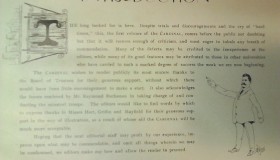
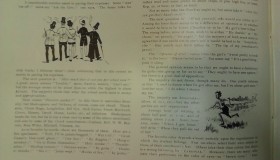
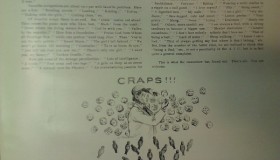
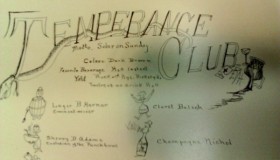
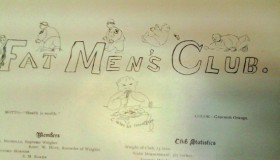
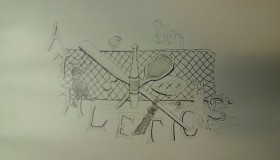
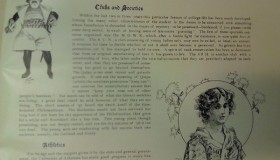
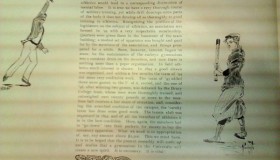
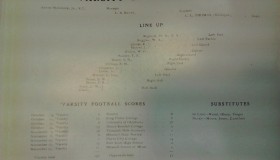
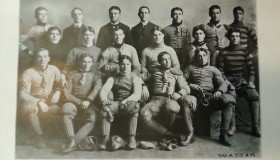
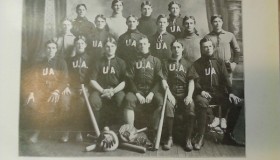
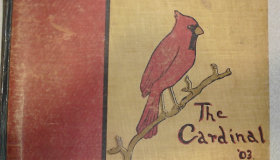
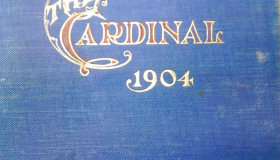
49 Responses
Comments are closed.